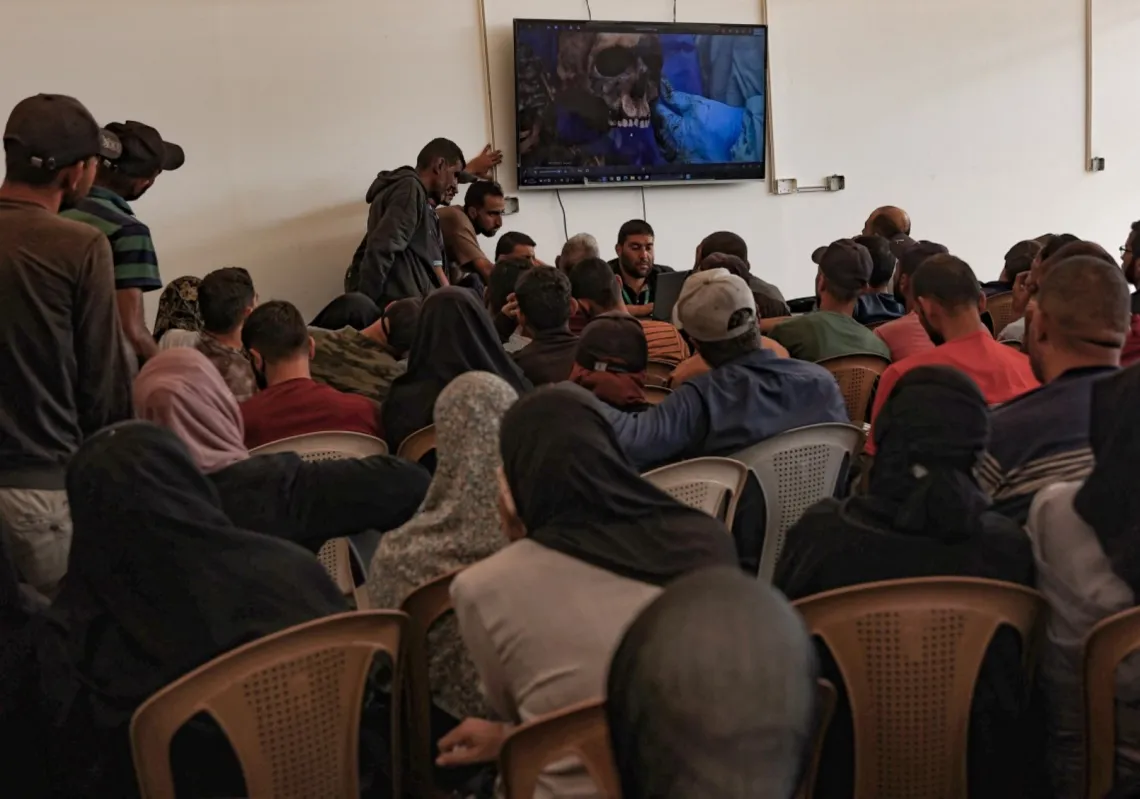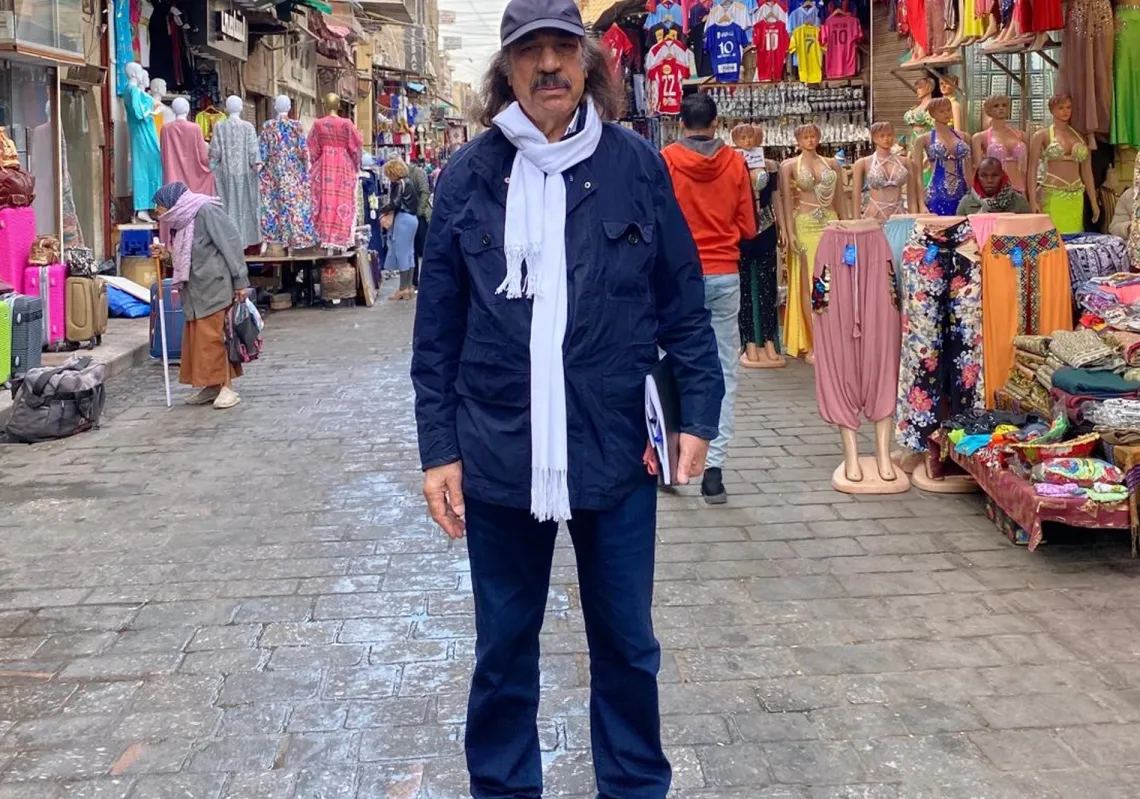[caption id="attachment_55253698" align="aligncenter" width="2000"]
 King of Saudi Arabia, Salman bin Abdulaziz Al Saud (R) shakes hands with U.S. President Donald Trump (L) duirng the U.S. - Gulf Summit at King Abdul Aziz International Conference Center in Riyadh, Saudi Arabia May 21, 2017. (Photo by BANDAR ALGALOUD / SAUDI ROYAL COUNCIL / HANDOUT/Anadolu Agency/Getty Images)[/caption]
King of Saudi Arabia, Salman bin Abdulaziz Al Saud (R) shakes hands with U.S. President Donald Trump (L) duirng the U.S. - Gulf Summit at King Abdul Aziz International Conference Center in Riyadh, Saudi Arabia May 21, 2017. (Photo by BANDAR ALGALOUD / SAUDI ROYAL COUNCIL / HANDOUT/Anadolu Agency/Getty Images)[/caption]
Avoiding a Full-Blown War Requires a Durable Approach
by Hanin Ghaddar*
The US-Arab summit in Saudi Arabia concluded with a number of resolutions regarding terrorism in the region, and as expected, the Riyadh communique stressed that Iran is a sponsor of terrorism and that the Iranian proxies are terrorist groups that should be treated as such.
During his 30 minute long speech, US President Donald Trump held Iran responsible for global extremism, urged Arab and Muslim nations to freeze channels of funding for groups including ISIS and Hezbollah, and highlighted US and Saudi commitment to economic development, inter-faith peace and the fight against terrorism. “From Lebanon to Iraq to Yemen, Iran funds, arms and trains terrorists, militias and other extremist groups that spread destruction and chaos across the region," the president said.
On the issue of Iran and its proxies, the summit included Hezbollah, Houthis and Hamas, ISIS and Al-Qaeda under a newly defined umbrella of terrorism, which indicates a major shift of US policy towards Iran and its operations in the region, and signifies a strategy to confront these proxies in Yemen, Iraq, Syria and Lebanon. The question remains, how? And what can be done to contain Iran’s operations without escalating the war and leading to further destruction of all the states where Iran’s proxies are active? The context of the summit might be helpful to answer this question.
One day before heading to Saudi Arabia, Trump’s administration imposed its first terrorism sanctions jointly with Saudi Arabia on Friday. The State Department announced sanctions on senior Hezbollah leader Hashem Safieddine and Muhammad al-Isawi, a leader of ISIS’ operations on the Sinai Peninsula in Egypt.
Saudi Arabia joined the U.S. in targeting Safieddine, who is said to oversee the financial empire of the Lebanon-based party. "As a result, any of his assets held in Saudi Arabia are frozen, and transfers through the kingdom's financial sector are prohibited," the State Department said in a statement.
The timing of this designation is more interesting that the designation itself. It came as a message by US and Saudi Arabia’s upcoming joint effort to confront Hezbollah as part of the countering extremism strategy; a strategy that is going to produce more sanctions against the Party of God, and businessmen directly or indirectly associated with it. Some earlier leaked version of the coming Hezbollah sanctions by the US Treasury mentioned allies of Hezbollah such as members of Amal Movement and the Free Patriotic Movement.
Sanctions are part of this strategy. Another sign of an additional part of this strategy is military. Also, a couple of days ahead of Trump’s visit to Saudi Arabia, U.S. airstrike struck pro-Syrian government forces to prevent them from moving toward the Tanf border crossing on Thursday, the first such close confrontation between U.S. forces and fighters backing President Bashar Assad. The region around Tanf, where the borders of Jordan, Syria and Iraq meet, has been considered a de-conflicted zone, under an agreement between the U.S. and Russia.
[caption id="attachment_55253699" align="aligncenter" width="4000"]
 Protesters shout anti-Iran slogans and hold placards in front of the Iranian embassy on December 16, 2016, in Istanbul, during a demonstration against Iranian involvement in the siege of Aleppo, the latest in a series of demonstrations in Europe over the Syria crisis. (by OZAN KOSE/AFP/Getty Images)[/caption]
Protesters shout anti-Iran slogans and hold placards in front of the Iranian embassy on December 16, 2016, in Istanbul, during a demonstration against Iranian involvement in the siege of Aleppo, the latest in a series of demonstrations in Europe over the Syria crisis. (by OZAN KOSE/AFP/Getty Images)[/caption]
It seems most of the forces hit were Iranian and Hezbollah forces, which have recently deployed there to secure the main highway that runs from Damascus to Baghdad, thereby completing a land bridge that would link Lebanon to Iran.
The U.S. strike was a message to Iran stressing two points; one, the US is not OK with this land bridge; and two, Iran’s influence in Syria is not welcome, despite what Russia thinks it can do.
Iran’s Quds Force does not seem like it is going to take these signs into consideration. For example, later on Thursday, Fars, an Iranian news agency affiliated with the Islamic Revolutionary Guard, reported that 3,000 Hezbollah fighters had been sent to Tanf to back the Syrian military in its fight against the United States “and establish security at the Palmyra-Baghdad road.”
Of course, Iran is not going to just back out and go without a fight. Iran will probably fight until the last Arab Shiite in the region, and as long as Iran’s borders and people are protected from the fire erupting in the region because of the IRGC operations, Iran will not stop only because the U.S. sent a few messages.
If anything, this means there will be more of these incidents where the U.S. will find itself in direct confrontation with Iran’s proxies, and maybe some IRGC forces on the ground. This could lead to serious escalation if the plan was to actually stop Iran from opening that part of the border. In this case, a durable approach - instead of reactions to Iran’s moves – is very much needed if a full-blown war is to be avoided.
A plan of this sort requires a comprehensive strategy where the U.S. must combine military presence and force with political pressure in places where diplomacy still works, such as working with certain figures and institutions in Iraq and Lebanon. But most importantly, Trump will need regional allies to be part of this strategy. The Riyadh summit could be a beginning of this strategic cooperation.
More will unfold in Washington upon Trumps return later this week. But in any case, the trip and its context have already put Iran and Hezbollah in a tight spot. Hezbollah’s move last week to dismantle its positions along the Lebanese Syrian borders and hand the area over to the Lebanese Army was not made abruptly or because Hezbollah really feels that its mission along these borders is over. Hezbollah felt the mounting pressure and its leadership probably thought that Syria is more of a priority today than the Lebanese borders, where Israel could also strike.
Despite all these shifts, one thing should not be forgotten: Iran has invested so much in the region and will not leave even under a military threat. Iran will fight with all its proxies and will not mind the total destruction of all states of Iraq, Syria and Lebanon, and their institutions. But Iran cannot do much if Russia’s role in Syria was not acknowledged. And what this US-Arab summit said is that Russia’s role is no longer significant. That’s exactly why Iran should worry.
*Hanin Ghaddar is a Friedmann Visiting Fellow at the Washington Institute for the Near East Policy. She tweets @haningdr








